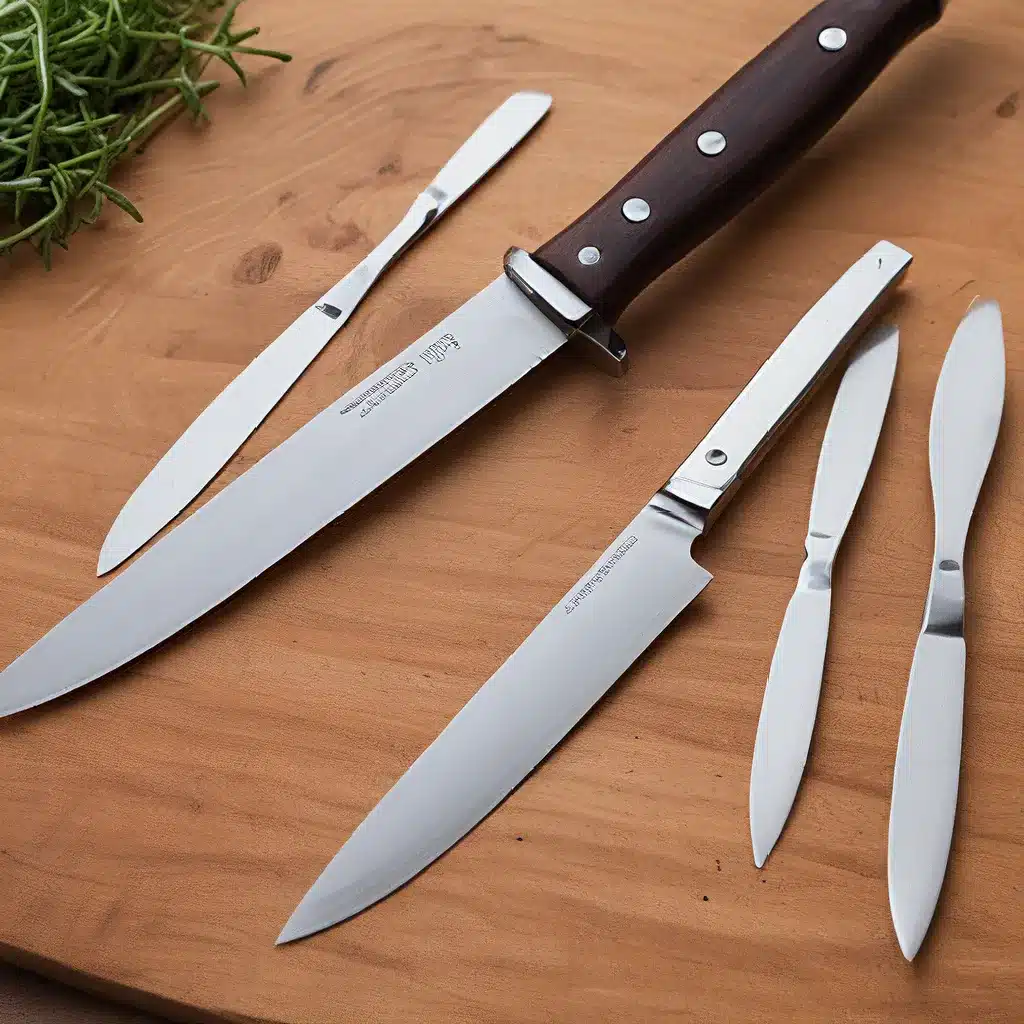
Ah, the humble kitchen knife – a trusty companion that enables us to slice, dice, and chop our way through countless culinary adventures. But let’s be honest, these hardworking blades don’t always get the TLC they deserve. As a self-proclaimed knife enthusiast, I’m on a mission to change that. Join me as we dive into the world of proper knife care and discover the essential techniques that will help your cutlery live a long and productive life.
Cleaning and Drying: The Keystone of Knife Maintenance
Believe it or not, the secret to keeping your knives in tip-top shape starts with something as simple as cleaning and drying them after each use. It’s the foundation upon which all other knife care rituals are built.
First and foremost, never put your knives in the dishwasher. The harsh water pressure and abrasive cleaning agents can wreak havoc on the delicate edges, causing them to dull prematurely. Instead, opt for good old-fashioned hand-washing with warm, soapy water. Gently scrub the blades, being mindful of the sharp edges, and then dry them thoroughly using an absorbent towel or paper towels.
You see, stainless steel knives contain a bit of carbon, which is essential for their sharpness and performance. However, this carbon can also lead to unsightly discoloration if the blades aren’t properly dried. By taking the time to ensure your knives are completely moisture-free, you’ll prevent that pesky haze from developing and keep your cutlery looking its best.
The Art of Oiling: Protecting Your Blades
For those of you who have invested in high-quality carbon steel knives, there’s an extra step involved in maintaining their pristine condition. These beauties are particularly reactive to acidic foods, like citrus, tomatoes, and onions. So, after washing and drying your carbon steel knives, it’s essential to give them a light coating of food-safe oil, such as camellia oil.
This protective layer acts as a barrier, shielding the blades from the corrosive effects of those acidic ingredients. Plus, it helps encourage a slow, even patina to develop on the steel, giving your knives a unique and beautiful character over time.
To apply the oil, simply use your finger to distribute a pea-sized amount evenly across the blade, from the spine to the edge. Remember, do not directly touch the edge with your fingers, as that can dull the sharpness. Instead, gently run an oiled towel over the edge to ensure it’s protected.
Sharpening: The Key to Cutting Performance
Now, let’s talk about the holy grail of knife care: sharpening. A sharp knife is not only more efficient but also safer than a dull one. After all, you’re far less likely to slip and cut yourself if your blade is in tip-top shape.
I recommend having your knives professionally sharpened at least once a year, even if you’re maintaining them at home. Machine sharpening can often be too abrasive, removing too much steel and potentially damaging the blade’s structure. Instead, seek out a skilled sharpener who can use a specialized whetstone or other techniques to restore the perfect edge.
In between professional tune-ups, you can keep your knives sharp with a simple honing rod. This tool doesn’t actually sharpen the blade; rather, it helps to realign the edge, removing any microscopic imperfections that can develop over time. Just a few gentle strokes on the honing rod before each use can make a world of difference in the cutting performance of your knives.
Proper Storage: Protecting Your Cutlery Investment
Lastly, let’s talk about how you store your knives. Tossing them haphazardly into a drawer or letting them jostle around in a cluttered utensil holder is a recipe for disaster. Not only does it put the blades at risk of getting nicked or chipped, but it can also be a safety hazard for you and your family.
Instead, consider investing in a magnetic knife strip or a dedicated knife block. These handy storage solutions keep your blades safely out of harm’s way while also showcasing your impressive collection. If you’re short on counter space, you can even opt for a knife roll or a saya (a traditional Japanese blade cover) to protect your knives during transport or when not in use.
Embracing the Journey of Knife Care
Caring for your knives may seem like a lot of work, but trust me, it’s a labor of love that’s well worth the effort. By incorporating these essential techniques into your routine, you’ll not only extend the life of your cutlery but also ensure that every slice, dice, and chop is executed with precision and ease.
Remember, proper knife care is an ongoing journey, not a one-time task. As you familiarize yourself with the nuances of maintaining your blades, you’ll start to develop a deeper appreciation for the tools that make our culinary adventures possible. Who knows, you might even find yourself becoming a bit of a knife enthusiast like me!
So, roll up your sleeves, grab your favorite knives, and let’s embark on this knife care odyssey together. Your blades will thank you, and your cooking experience will be all the better for it. Happy slicing!


